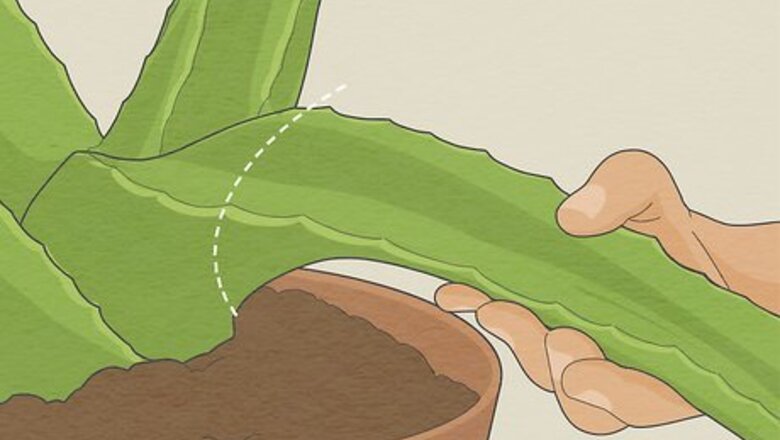
views
- Wash your burn well and then apply a thin layer of aloe 2 to 3 times a day. Aloe cools your skin, helps speed up healing, and reduces inflammation and pain.
- Use raw aloe from an aloe plant to treat burns, or use aloe vera gel or lotion.
- Seek medical treatment if your burn is severe, gets worse, or is infected.
Soothing and Healing Burns with Aloe
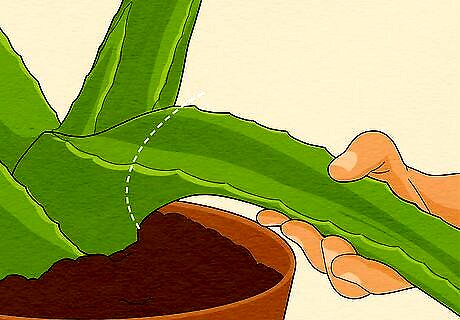
Cut aloe from a plant if you have one. If you have an aloe plant in your home or near where your burn occurred, you can use it to get fresh aloe. Remove a few meaty leaves near the bottom of an aloe vera plant, since that’s where they’re the oldest. Cut off any spines on the leaves to avoid getting poked, and cut the leaves in half down the middle. Then, score the insides with a knife to let the aloe flow out. Aloe straight from the plant is the best way to get pure, all-natural aloe. However, there are store-bought options you can try as well. Older aloe plant leaves contain more aloe. Using younger leaves is fine, too, they just might not have as much aloe inside of them. Aloe vera plants are very easy to plant and maintain, and they’re great to have on-hand for minor injuries and sunburns. They grow in almost all indoor climates, and in warm outdoor climates.

Use store-bought aloe if you don’t have a plant. Look for an aloe vera gel or aloe vera lotion to treat your burn. Make sure the product is 100% pure aloe vera gel (or as close to 100% as possible) to ensure you’re getting the most benefit out of it. Look at the ingredient list of the gel you buy. Some that claim that they are "made with pure aloe gel" only actually contain 10% aloe, so it’s always good to double check.
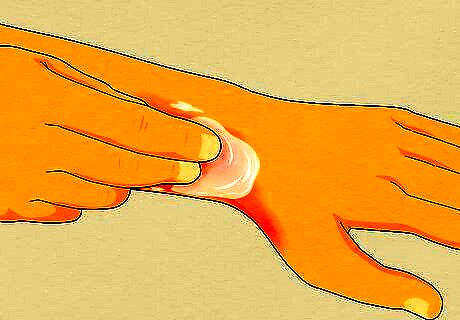
Spread a thick layer of aloe onto your burn. Take the aloe you extracted from the plant or pour a generous amount of the gel into your hands. Rub it gently onto the burned area, making sure not to scrub the affected area or rub too hard. If your burn is in an area that might get rubbed or bumped, cover the aloe with a clean bandage or gauze. Otherwise, leave it uncovered. Make sure to clean your burn with soap and water before applying aloe.
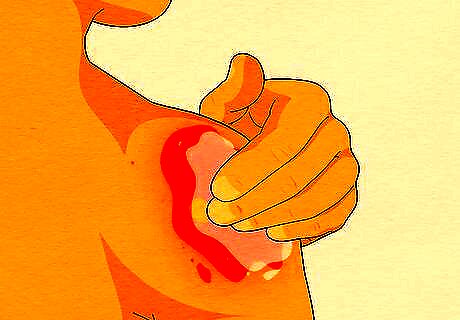
Reapply the aloe 2 to 3 times per day. First- and second-degree burns can take up to 3 weeks to heal. As your burn gets better, feel free to keep applying aloe to your skin. Aloe is soothing and cooling, so it will help speed up healing as well as reduce inflammation and discomfort. Experts note that while more studies are needed, preliminary research has shown that aloe can help speed up healing of minor burns. There are no side effects to using aloe on your skin. If you have any pain, redness, or discomfort after using aloe, you may be allergic. Rinse the aloe off your skin if you have an adverse reaction.
Home Remedies for Burns
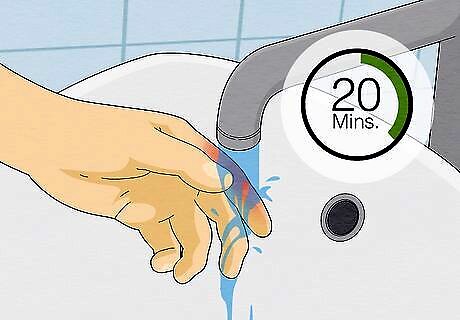
Cool your burn with water for 20 minutes. This helps pull the heat from the wound and calm the skin before you apply aloe. Run cold water over the burn for 10 to 20 minutes as soon as possible after the burn. If you cannot reach the area with a tap or shower, soak a cloth in cold water and place it over the burn for 20 minutes. Replace the cloth as its temperature rises with another newly soaked cloth.

Clean the burn with soap and water. Take some soap and rub it in your hands. Gently rub the soap over the burned area, cleaning it. Rinse the area with cool water to remove the soap suds, then pat your skin dry with a towel. Be very gentle, and don’t rub the burn vigorously. This can damage your skin or cause blisters.
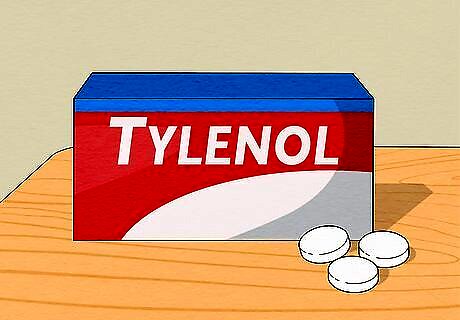
Take an over the counter pain medicine. Pain medicines help reduce inflammation and irritation from a burn. Take something like acetaminophen (Tylenol), ibuprofen (Advil or Motrin), naproxen (Aleve), or aspirin, and follow the dosage instructions on the bottle. Do not give aspirin to a child under 2 years old.
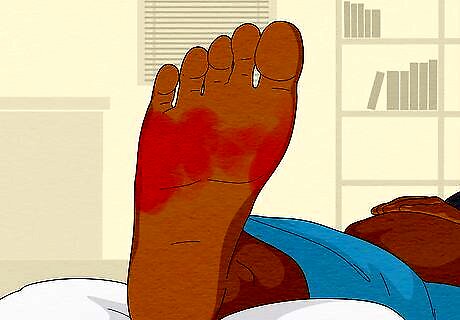
Keep the burn elevated if possible. Elevating your burn will help reduce swelling and promote healing. If you only burned a small area, like your hand, arm, or foot, raise the burn above your heart as often as possible. Try resting your hand or foot on a pillow when you sit down to keep the burn elevated.

Use honey to speed up healing. Honey has been used as a natural burn ointment for centuries, and preliminary studies show that it can help burns heal faster. Try adding a small layer of organic honey to the burn once a day until it heals. You can use honey in combination with the aloe. Try switching back and forth between using honey and aloe vera to speed up the healing process. Don’t put honey on an open wound or any severe burns.

Soothe a sunburn with tea tree oil. Tea tree oil is an extract that helps soothe skin by reducing inflammation. If you have a sunburn, mix 1 to 2 drops of tea tree oil with a carrier oil, like jojoba oil, coconut oil, or even aloe vera. Use a rag to spread the mixture onto your skin once a day. Essential oils can cause skin irritation, especially if they are not diluted. Always dilute tea tree oil before using it on your skin. Other soothing essential oils include peppermint oil, chamomile oil, and lavender oil.
When to Seek Medical Treatment
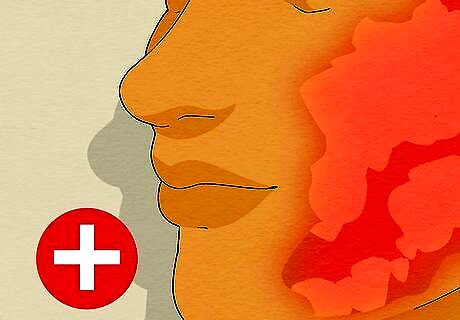
See your doctor for a burn that’s large, severe, or in a sensitive area. These burns should only be treated by a healthcare provider. Trying to treat them yourself may lead to an infection or scarring. In general, visit your doctor if your burn is: On your face, hands, feet, genitals, or joints. Larger than 2 inches (5.1 cm) in size. Showing signs of being a third-degree burn, including dry and leathery skin, lack of pain, or blackened skin.

Get medical attention if your burn shows signs of infection or scarring. Burns can get infected, even with treatment. Fortunately, your doctor can provide you with a treatment to kill the infection, such as an antibiotic or medicated cream. Signs of infection include: Oozing from your burn Redness around the burn Swelling Increased pain Scarring Fever

Visit your doctor if your burn isn’t improving after 1 week. Your burn might take several weeks to heal, but you should see some improvement after about a week of home treatment. If your burn isn’t improving, you may need medical care. Your doctor can evaluate the burn and offer additional treatment. Monitor your burn by taking photos of it or measuring it each day. Your doctor can prescribe a burn cream or ointment to speed up the healing process. The cream or ointment will help prevent infection and will prevent your bandages from sticking to your wound.



















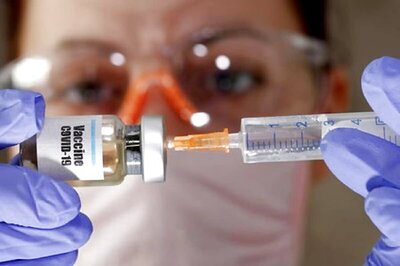
Comments
0 comment